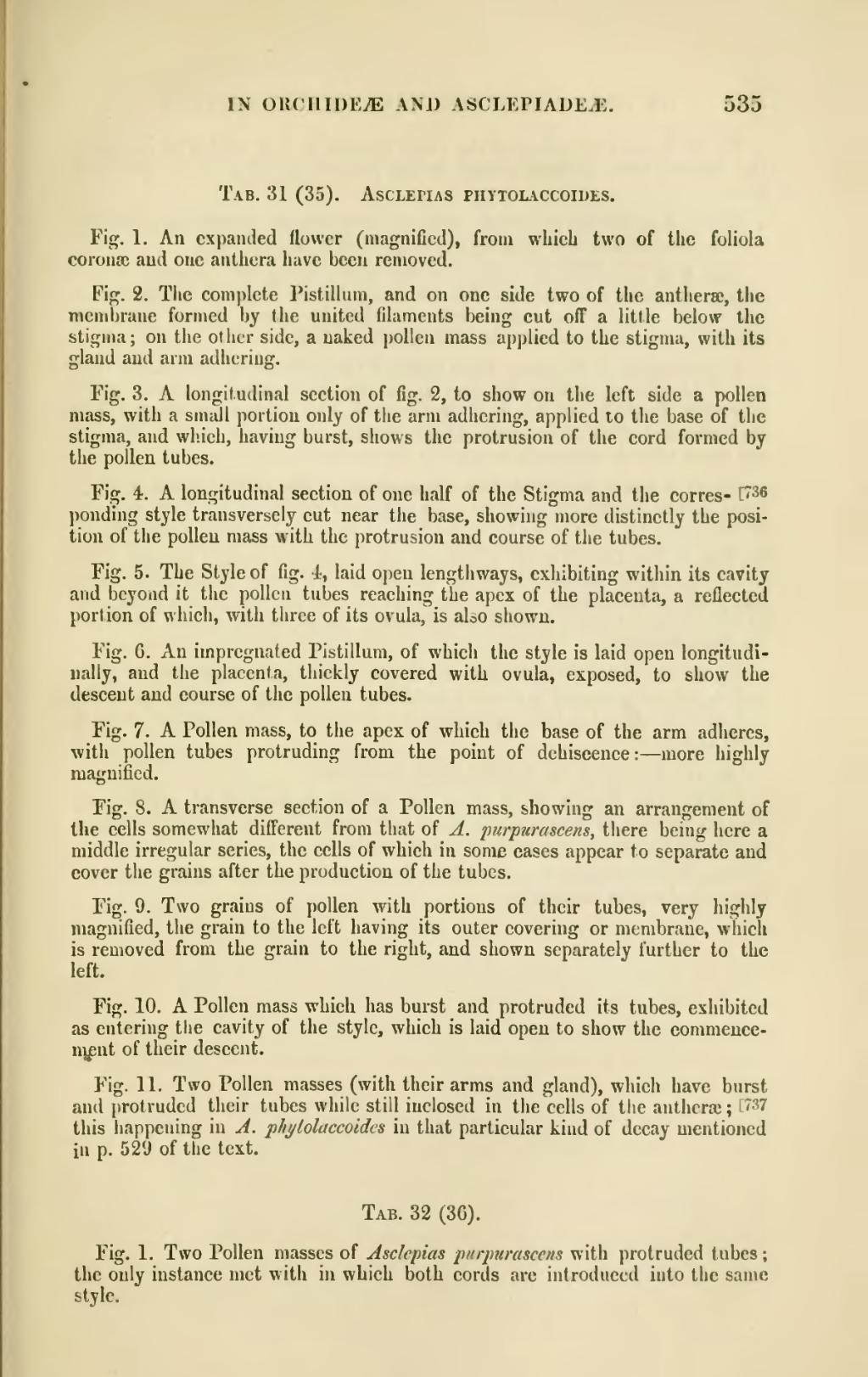Tab. 31 (35). Asclepias phytoclaccoides
Fig. 1. An expanded flower (magnified), from which two of the foliola coronæ; and one anthera have been removed.
Fig. 2. The complete Pistilum, and on one side two of the antheræ, the membrane formed by the united filaments being cut off a little below the stigma; on the other side, a naked pollen mass applied to the stigma, with its gland and arm adhering.
Fig. 3. A longitudinal section of fig. 2, to show on the left side a pollen mass, with a small portion only of the arm adhering, applied to the base of the stigma, and which, having burst, shows the protrusion of the cord formed by the pollen tubes.
Fig. 4. A longitudinal section of one half of the Stigma and the corres- ponding style transversely cut near the base, showing more distinctly the posi- tion of the pollen mass with the protrusion and course of the tubes.
Fig. 5. The Style of fig. 4, laid open lengthways, exhibiting within its cavity and beyond it the pollen tubes reaching the apex of the placenta, a reflected portion of which, with three of its ovula, is also shown.
Fig. 6. An impregnated Pistillum, of which the style is laid open longitudi- nally, and the placenta, thickly covered with ovula, exposed, to show the descent and course of the pollen tubes.
Fig. 7. A Pollen mass, to the apex of which the base of the arm adheres, with pollen tubes protruding from the point of dehiscence: — more highly magnified.
Fig. 8. A transverse section of a Pollen mass, showing an arrangement of the cells somewhat different from that of A. purpurasceus, there being here a middle irregular series, the cells of which in some cases appear to separate and cover the grains after the production of the tubes.
Fig. 9. Two grains of pollen with portions of their tubes, very highly magnified, the grain to the left having its outer covering or membrane, which is removed from the grain to the right, and shown separately further to the left.
Fig. 10. A Pollen mass which has burst and protruded its tubes, exhibited as entering the cavity of the style, which is laid open to show the commence- ment of their descent.
Fig. 11. Two Pollen masses (with their arms and gland), which have burst and protruded their tubes while still inclosed in the cells of the anthera);[737 this happening in A. phytolaccoides in that particular kind of decay mentioned in p. 529 of the text.
Tab. 32 (36).
Fig. 1. Two Pollen masses of Asclepias purpurascois with protruded tubes; the only instance met with in which both cords are introduced into the same style.
